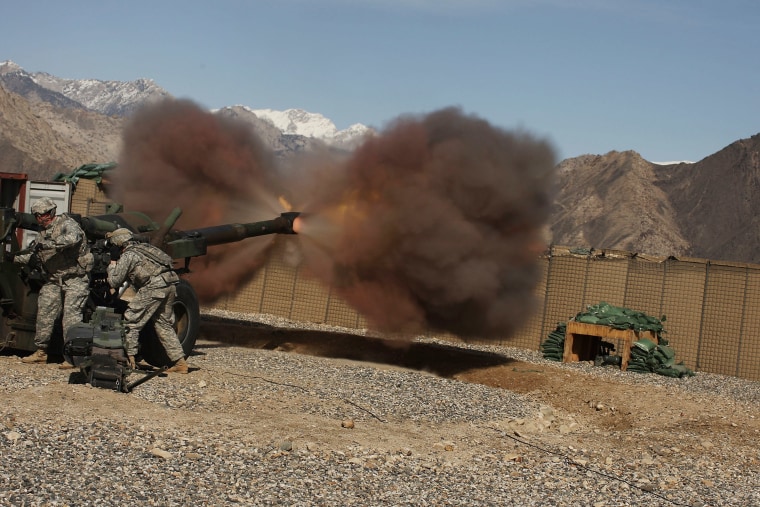President Barack Obama approved adding some 17,000 U.S. troops for the flagging war in Afghanistan, his first significant move to change the course of a conflict that his closest military advisers have warned the United States is not winning.
"To meet urgent security needs, I approved a request from (Defense) Secretary Gates to deploy a Marine Expeditionary Brigade later this spring and an Army Stryker Brigade and the enabling forces necessary to support them later this summer," Obama said in a statement issued by the White House.
About 8,000 Marines are expected to go in first, followed by about 9,000 Army troops. Some 34,000 U.S. troops are already in Afghanistan.
"There is no more solemn duty as president than the decision to deploy our armed forces into harm's way," Obama added. "I do it today mindful that the situation in Afghanistan and Pakistan demands urgent attention and swift action. The Taliban is resurgent in Afghanistan, and al Qaeda supports the insurgency and threatens America from its safe-haven along the Pakistani border."
Of the 17,000 troops authorized, deployment orders have been issued for 12,000 and some of those are being reassigned from roles in Iraq. Where the remaining 5,000 troops will come from will be determined later.
The Marine unit is from Camp Lejeune, N.C.. The Stryker unit is from the 5th Brigade, 2nd Infantry Division out of Fort Lewis, Wash.
The Stryker brigade was originally ordered last fall to go to Iraq. It is now at the National Training Center in the Mojave Desert, training for deployment.
Deployment likely in south
Most of the extra forces are expected to be sent to southern Afghanistan, where a shortage of U.S. and NATO troops face an intensifying Taliban insurgency.
The new troops could be a down payment on an even larger influx of U.S. forces that has been widely expected this year, and it will get forces in place in time for the increase in fighting that usually comes with warmer weather and ahead of national midyear elections.
Earlier Tuesday, Obama said the situation in Afghanistan "actually appears to be deteriorating at this point."
"I'm absolutely convinced that you cannot solve the problem of Afghanistan, the Taliban and the spread of extremism in the region solely through military means," he told the Canadian Broadcasting Corp. in an interview ahead of his trip to Ottawa on Thursday. "We're going to have to use diplomacy, we're going to have to use development."
Afghan strategy still under review
The Afghan directive is the first time the new commander in chief has sent significant numbers of new forces into battle. Obama campaigned on a new strategy for the Afghanistan war, but he has taken his time to approve the new forces.
The planned troop deployment does not preclude sending more forces in the future, a senior White House official said. Any others, however, would come as part of a broader strategic review of the entire policy in Afghanistan and Pakistan, not as a stand-alone troop decision, the official said.
That review should be completed sometime around the end of March, which coincides with a NATO summit in Europe.
U.S. commanders have said they could send an additional 30,000 troops to Afghanistan this year, nearly doubling the American contingent. Gates has said two brigades could be ready to go there by spring and a third by summer.
Earlier Tuesday, concluding that a "game-changing" strategy is urgently needed in Afghanistan to save the faltering international campaign.
"All is not lost in Afghanistan," RAND Corp. experts said in a paper released by the congressionally funded United States Institute of Peace.
